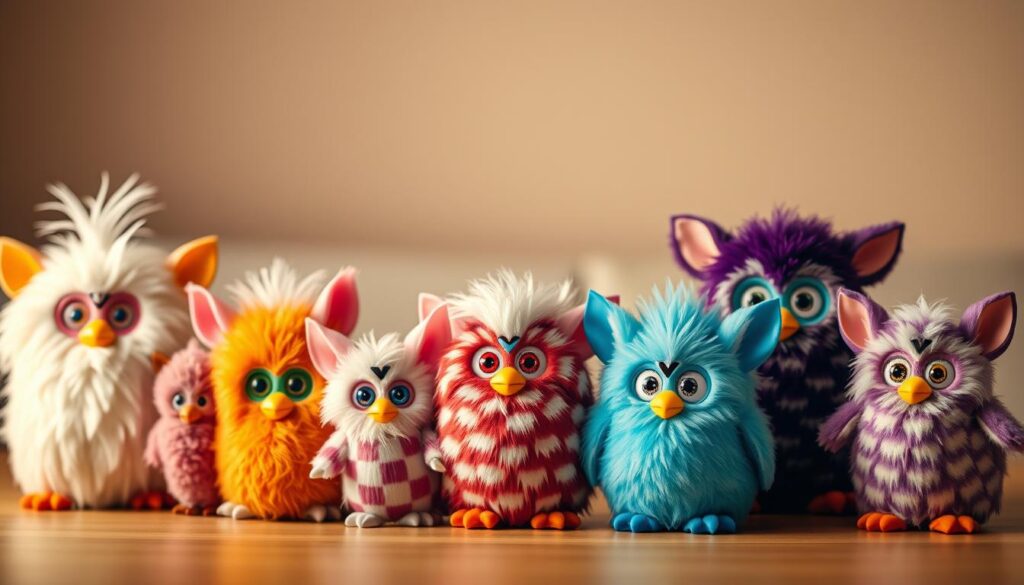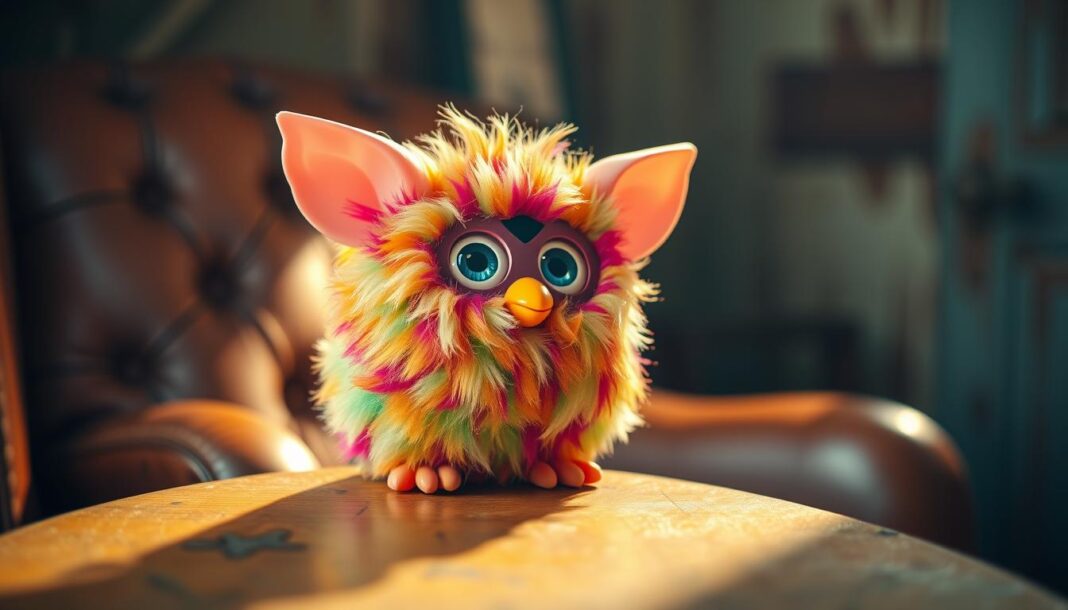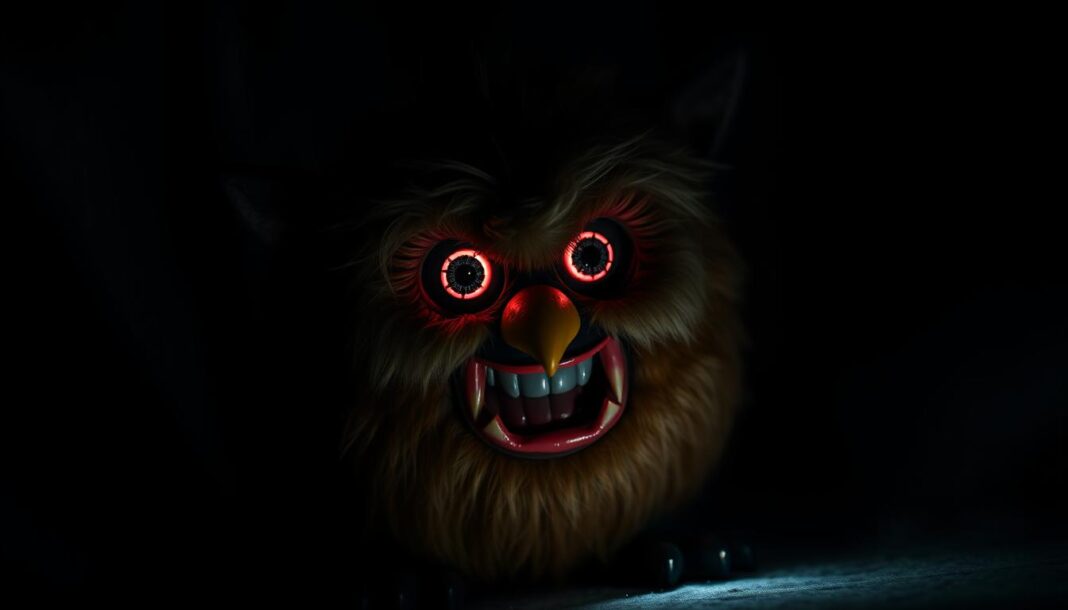Remember the chatterbox toy that took the late ’90s by storm? Furbies became an instant hit when Tiger Electronics launched them in 1998. These interactive creatures blended mechanical engineering with early AI, creating a must-have holiday gift.
Over 40 million units sold worldwide, making them one of the most iconic toys of their era. Their ability to “learn” English and respond to touch fascinated kids and adults alike. Now, Hasbro’s 2023 reboot celebrates their 25th anniversary.
Why do these fuzzy companions still captivate millennials and Gen Z collectors? Their nostalgic charm meets modern tech appeal. This article explores their evolution, cultural impact, and why they remain a beloved piece of pop culture history.
The Fascinating History of Furbies
The late ’90s introduced a fuzzy, talking phenomenon that flew off shelves. Priced at $35, these interactive creatures sold out within months, becoming a holiday must-have. Their blend of lifelike reactions and “learning” English captivated millions.
From 1998 to Today: A Toy Phenomenon
Tiger Electronics launched the first generation in 1998, sparking a global craze. Over 40 million units sold by 2002, thanks to clever marketing and word-of-mouth hype. Parents lined up for hours, and resellers marked prices up to $300.
Inventors and Technology Behind the Original
Engineers David Hampton and Caleb Chung designed the reversible motors for realistic movements. Programmers Wayne Schulz and Hampton used a 6502 microprocessor—the same chip in Apple II—to simulate “learning.”
Their focus on durability ensured Furbies survived rough play. Later, Hasbro partnered with Tiger Electronics to refine future generations, blending nostalgia with modern tech.
How Furbies Evolved Through the Years
From blinking eyes to voice commands, each generation brought new surprises. This iconic toy adapted to tech trends while keeping its quirky personality. Let’s break down the upgrades that kept fans hooked.

First to Fourth Generations: Key Upgrades
The original 1998 model relied on basic motors and a 6502 chip. By 2012, LCD eyes and app connectivity turned it into a hybrid digital-mechanical companion. Here’s how features stacked up:
| Generation | Years | Key Features | Price |
|---|---|---|---|
| Gen 1 | 1998–2002 | Mechanical movements, 200+ phrases | $35 |
| Gen 2 | 2005–2007 | New colors, infrared communication | $40 |
| Gen 3–4 | 2012–2017 | LCD eyes, mobile app sync | $60 |
Discontinued in 2017, older models now fetch high prices among collectors. The app-dependent Gen 4 lost charm as tech aged, paving the way for a simpler revival.
The 2023 Reboot: What’s New?
Hasbro’s anniversary edition ditched Wi-Fi for pure nostalgia. Compact and coral-furred, it responds to 600 voice-activated phrases—no internet required. Priced at $70, it mirrors modern toy trends: offline play and retro appeal.
Why Furbies Remain Iconic
Few toys have left a mark on pop culture like these interactive creatures. Their blend of nostalgia and early AI still sparks fascination today. From rare collectibles to clever programming, here’s why they endure.
Cultural Impact and Collectibility
Vintage models now sell for $100+ on eBay, especially limited editions like the 2005 Star Wars version. Their cameos in shows like Friends and South Park cemented their status as a ‘90s icon.
Online communities trade tips for restoring older units. The 1998 model’s scarcity drives prices up, proving nostalgia has real value.
Programming and “Lifelike” Interactions
The original 6502 chip couldn’t support true AI, so engineers faked it. Mood shifts and 600+ phrases mimicked learning. Sensors responded to light, touch, and sound, creating the illusion of a thinking companion.
Patents highlight “emotional bonding” features—like purring when held. This pseudo-intelligence set the stage for later smart toys, blending mechanics with charm.
Keeping the Furby Magic Alive
These quirky companions continue to charm new generations. The 2023 reboot keeps it simple with an off switch—perfect for parents who remember the ‘90s chaos.
Vintage models thrive with care. Replace batteries carefully and clean motors to avoid glitches. Creative fans dye fur or paint details for unique custom looks.
Hasbro’s focus on nostalgia pays off. Kids today love their parents’ stories about these chatty toys. The reboot bridges generations without apps or Wi-Fi.
Expect these icons to evolve. They’ll likely blend retro appeal with smart tech, staying relevant as both collectibles and playful companions.


